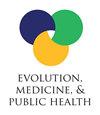重新审视成人疾病的发育起源范式:"分娩代谢协调 "假说
IF 2.1
3区 医学
Q2 EVOLUTIONARY BIOLOGY
引用次数: 0
摘要
在无并发症的妊娠中,出生体重与成人非传染性疾病 (NCD) 风险成反比。提出的一个机制是孕期母体营养不良。另一种解释是,共有基因将出生体重与非传染性疾病联系在一起。这两种假说都得到了支持,但进化观点只涉及环境途径。我们建议,出生体重与非传染性疾病风险之间的遗传和环境关联反映了母亲和胎儿之间的协调调节系统,该系统的进化是为了降低难产风险。首先,胎儿必须根据母体的新陈代谢信号调整其生长,因为它无法从自身的基因组中预测产道的大小。其次,我们预测,促进胎盘营养供应的母体等位基因经过选择,在胎儿表达时会限制胎儿的生长和妊娠期的长度。相反,增加产道大小的母体等位基因在胎儿表达时被选择为促进胎儿生长和妊娠。有证据支持这些假设。由于每个母亲都有可能孕育出一个对她的骨盆来说过大的婴儿,因此在类人新生儿进化出更大的体型和脑化过程中,这些调节机制可能经历了强有力的选择。我们的观点可以解释出生体重与非传染性疾病风险在大部分出生体重范围内的反比关系:通过可塑性或遗传机制对出生体重的任何限制都可能降低体内平衡的能力,并增加非传染性疾病的易感性。然而,母体肥胖和糖尿病可能会压垮这一协调系统,对阴道分娩造成挑战,同时增加后代患非传染性疾病的风险。我们认为,在形成出生体重与非传染性疾病风险之间的关联时,对可行阴道分娩的选择起到了至关重要的作用。本文章由计算机程序翻译,如有差异,请以英文原文为准。
Reconsidering the developmental origins of adult disease paradigm: the ‘metabolic coordination of childbirth’ hypothesis
In uncomplicated pregnancies, birthweight is inversely associated with adult non-communicable disease (NCD) risk. One proposed mechanism is maternal malnutrition during pregnancy. Another explanation is that shared genes link birthweight with NCDs. Both hypotheses are supported, but evolutionary perspectives address only the environmental pathway. We propose that genetic and environmental associations of birthweight with NCD risk reflect coordinated regulatory systems between mother and fetus, that evolved to reduce risks of obstructed labour. First, the fetus must tailor its growth to maternal metabolic signals, as it cannot predict the size of the birth canal from its own genome. Second, we predict that maternal alleles that promote placental nutrient supply have been selected to constrain fetal growth and gestation length when fetally expressed. Conversely, maternal alleles that increase birth canal size have been selected to promote fetal growth and gestation when fetally expressed. Evidence supports these hypotheses. These regulatory mechanisms may have undergone powerful selection as hominin neonates evolved larger size and encephalisation, since every mother is at risk of gestating a baby excessive for her pelvis. Our perspective can explain the inverse association of birthweight with NCD risk across most of the birthweight range: any constraint of birthweight, through plastic or genetic mechanisms, may reduce the capacity for homeostasis and increase NCD susceptibility. However, maternal obesity and diabetes can overwhelm this coordination system, challenging vaginal delivery while increasing offspring NCD risk. We argue that selection on viable vaginal delivery played an over-arching role in shaping the association of birthweight with NCD risk.
求助全文
通过发布文献求助,成功后即可免费获取论文全文。
去求助
来源期刊

Evolution, Medicine, and Public Health
Environmental Science-Health, Toxicology and Mutagenesis
CiteScore
5.40
自引率
2.70%
发文量
37
审稿时长
8 weeks
期刊介绍:
About the Journal
Founded by Stephen Stearns in 2013, Evolution, Medicine, and Public Health is an open access journal that publishes original, rigorous applications of evolutionary science to issues in medicine and public health. It aims to connect evolutionary biology with the health sciences to produce insights that may reduce suffering and save lives. Because evolutionary biology is a basic science that reaches across many disciplines, this journal is open to contributions on a broad range of topics.
 求助内容:
求助内容: 应助结果提醒方式:
应助结果提醒方式:


